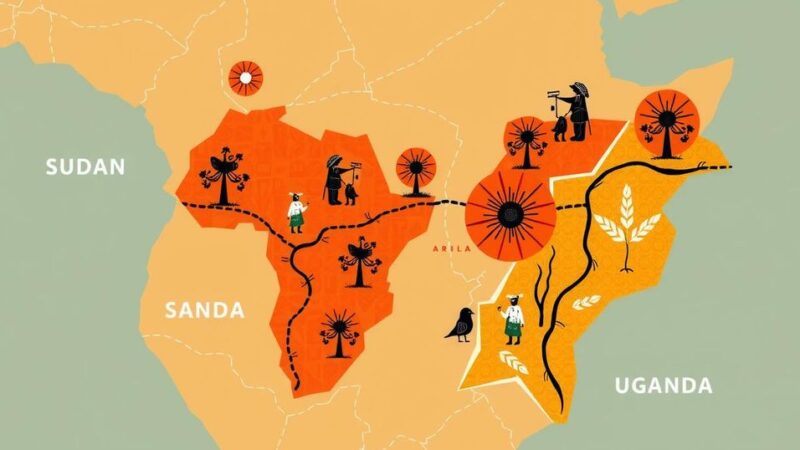Ethiopia is evacuating around 80,000 people due to a series of earthquakes, primarily in the Afar, Oromia, and Amhara regions, raising fears of volcanic eruptions. A significant earthquake of magnitude 5.8 prompted this response, affecting various cities, while local experts emphasize the need for updated building standards to better withstand seismic events.
The Ethiopian government is undertaking the evacuation of approximately 80,000 individuals in response to a series of recent earthquakes, particularly affecting the Afar, Oromia, and Amhara regions. Since Friday, at least ten seismic events have been registered, with indications of potential volcanic activity causing considerable concern among the populace. The most recent tremor, registering a magnitude of 5.8, occurred early Saturday in the Awash Fentale district, prompting further geological assessment of the region. The United States Geological Survey confirmed this significant quake, which was felt widely, including in the capital, Addis Ababa, and surrounding areas.
Among the seismic activities in the Afar region, reports have highlighted the creation of a natural hot spring crater, indicating the geological instability stemming from these quakes. Fortunately, there have been no recorded casualties, but numerous homes have sustained damage, necessitating urgent governmental action. The evacuation is particularly focused on vulnerable populations with over 51,000 residents relocated from high-risk areas, and emergency workers have been deployed to assess damages across twelve districts.
Following concerns surrounding the eruption of the Dofen volcano, where smoke has been observed rising from vents, the Ethiopian government is monitoring the situation closely. A statement indicated that efforts are underway to safeguard the affected populace while evaluating the earthquakes’ impact on essential services and infrastructure. Local residents have expressed their fears, recalling frightening experiences during the tremors that have driven them to seek safety.
Experts have voiced concerns regarding the safety of buildings in Ethiopia, especially in Addis Ababa, where adherence to seismic building standards has been inadequate. A professor from Addis Ababa University highlighted that while building codes have been established, significant gaps remain in compliance. Given the ongoing seismic activity, government engineers are taking measures to reinforce public structures against future earthquakes, demonstrating a commitment to addressing these emergent challenges.
The increasing frequency of earthquakes serves as a stark reminder of Ethiopia’s geographical vulnerabilities, and experts advocate for heightened awareness among authorities and residents to mitigate potential disasters. The Ethiopian Construction Authority is actively assessing the situation and will present findings to govern future infrastructures’ resilience against natural disasters.
Ethiopia is experiencing a surge in seismic activity, with recent earthquakes raising alarms over potential volcanic eruptions. The Afar region is particularly affected, with consistent tremors and structural concerns. Although there have been no fatalities, the damage to homes has prompted emergency evacuations. This situation underscores the need for robust infrastructure that meets modern building codes to withstand earthquakes, especially considering the country’s vulnerability to geological events.
In summary, Ethiopia is responding to an alarming trend of increased seismic activity by evacuating tens of thousands of residents from vulnerable regions. The government’s proactive stance seeks to ensure safety as geological assessments reveal both potential volcanic activity and structural inadequacies in buildings. As experts warn of ongoing risks related to earthquakes, the focus on infrastructure reinforcement and public awareness is crucial to mitigating future disasters and ensuring the community’s safety.
Original Source: www.voanews.com






